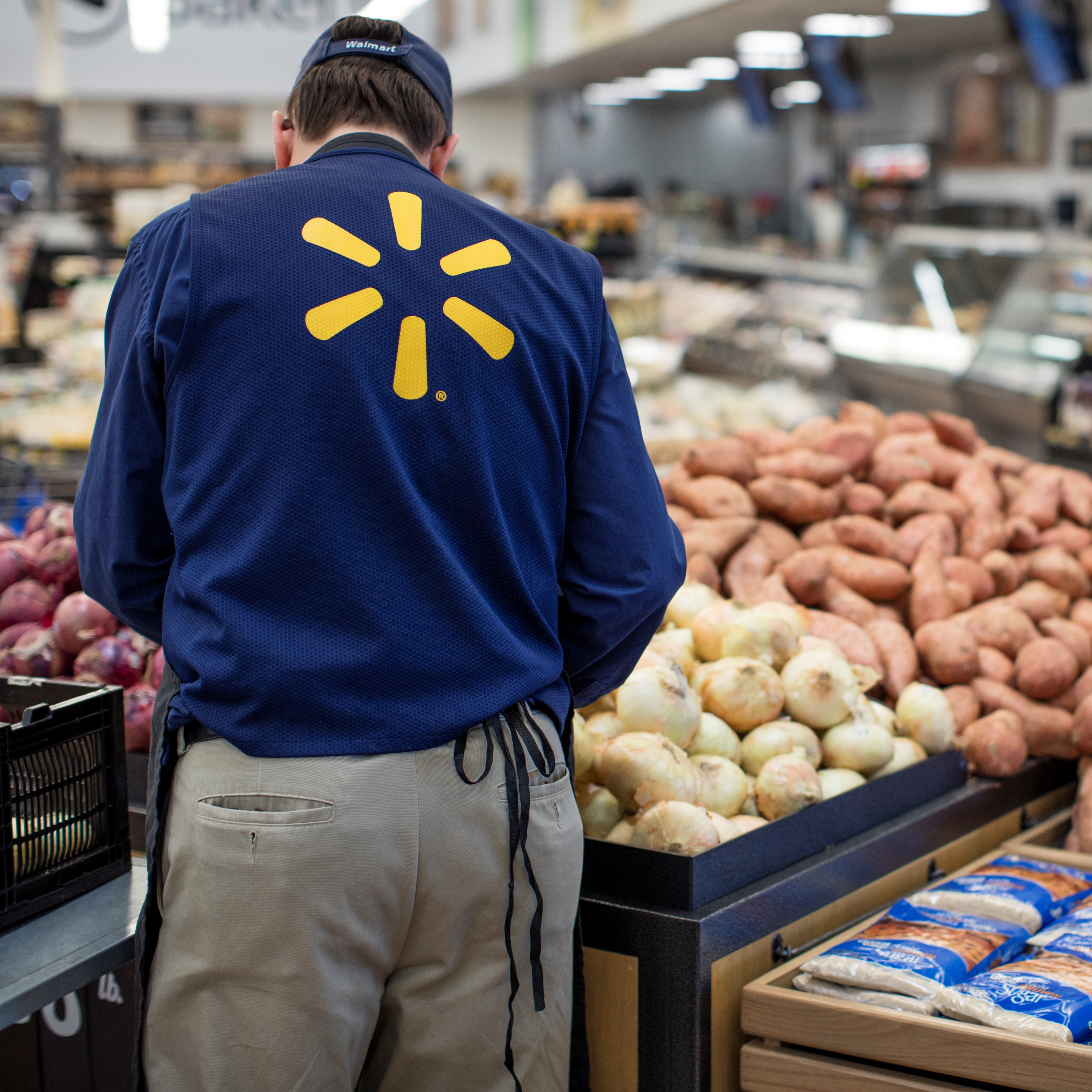
Online sales of food and beverages will amount to just 2.4% of total 2018 sales that should approach $1 trillion. That’s a prize approaching $23 billion. The total U.S. grocery bill, including food and nonfood items, generates about $5.5 trillion in annual sales.
That’s a market worth fighting over, and that’s exactly what online grocers are doing. The current leader among U.S. consumers who buy most or all of their groceries online is Walmart Inc. (NYSE: WMT), which grabs nearly 22% of these shoppers compared to second-place Amazon.com Inc. (NASDAQ: AMZN), which attracts 12%.
Market research firm Coresight Research reported the data earlier this week, and it is based on an online survey of 1,885 U.S. adults taken between March 15 and 24, 2018.
Although Walmart leads Amazon among consumers who buy most or all of their groceries online, Amazon has a commanding lead (59.5% versus 25.5%) among online grocery shoppers who have ever purchased groceries online. Coresight notes:
Notably fewer online grocery shoppers buy from Walmart.com (some 25.5%) than in-store grocery shoppers buy from Walmart stores (fully 60.8%). However, this is likely due to the very large share of shoppers that Amazon captures online, and we think that the most meaningful comparisons are between Walmart and its multichannel rivals.
Looking at the multichannel grocery stores, Walmart’s 25.5% is far ahead of second-place grocery chain Kroger Co. (NYSE: KR), which took 8.1% of sales, and third-place Target Corp. (NYSE: TGT) with 6.9%.
Nearly a third of consumers who expect to buy groceries online (32.2%) expect free delivery and another 37% expect delivery charges of $5 or less. Nearly 20% are willing to pay up to $10.
Here are Coresight’s key takeaways from the survey:
- Some 54% of consumers we surveyed do not expect to buy groceries online in the next 12 months, meaning that approximately half of all consumers are “up for grabs” among online grocery retailers.
- Cross-channel retailing is emerging as the dominant model in the US grocery sector: collection, rather than delivery, is the most popular means of receiving online orders, and Amazon has been paring back its online-only operations while building out its brick-and-mortar capabilities.
- We think online grocery could be polarized in the future, with low-cost, collection-based services fulfilling the majority of large, family-type orders and premium services such as Amazon Prime Now and Shipt fulfilling smaller orders via same-day delivery.
The full report is available at the Coresight Research website.
Want to Retire Early? Start Here (Sponsor)
Want retirement to come a few years earlier than you’d planned? Or are you ready to retire now, but want an extra set of eyes on your finances?
Now you can speak with up to 3 financial experts in your area for FREE. By simply clicking here you can begin to match with financial professionals who can help you build your plan to retire early. And the best part? The first conversation with them is free.
Click here to match with up to 3 financial pros who would be excited to help you make financial decisions.
Have questions about retirement or personal finance? Email us at [email protected]!
By emailing your questions to 24/7 Wall St., you agree to have them published anonymously on a673b.bigscoots-temp.com.
By submitting your story, you understand and agree that we may use your story, or versions of it, in all media and platforms, including via third parties.
Thank you for reading! Have some feedback for us?
Contact the 24/7 Wall St. editorial team.

